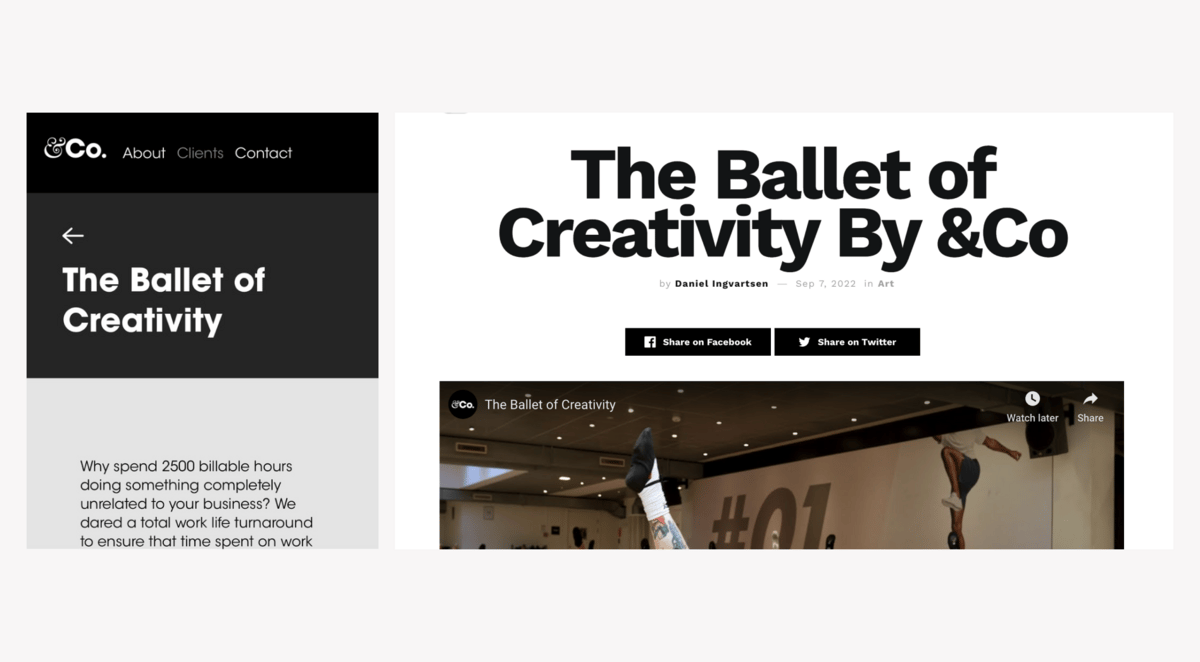Hi friends! It's officially been a month since my incredible time in Copenhagen. Life has been moving so fast, and I've been on my feet since arriving back but today, I wanted to take a moment to sit down, appreciate, and reflect.
Last month, I had the honor of delivering a talk at UX Copenhagen 2023, Denmark’s one and only design and human experience conference where I was invited by founder, Helle Martins.
It was a surreal experience to participate in the conference and be part of such an inspiring speaker line up amongst the industry’s leading designers and product leaders. All the talks and workshop topics ranged across a large spectrum that included topics such as AI, psychology, discrimination in design, data visualization, content design, inclusivity and so many more. Value-packed is an understatement.
The theme for the conference was “invisibility”
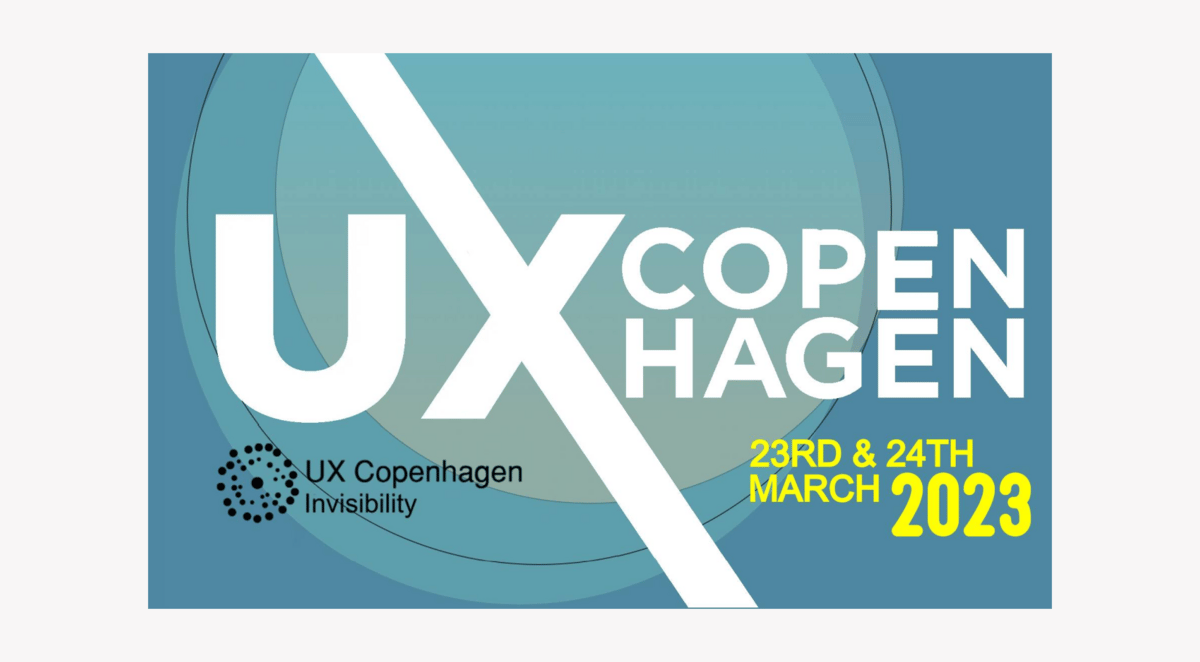
What goes into the development of creating invisible services, processes, and usable products, and at some of the other “invisible” things we do as designers…
Here are some of the many talks and workshops that happened:
“ChatGPT, AI, and UX” by Dr. Linda Sheard, Microsoft
“Designing for Relationships” by Lisa Talia Moretti
“Data Visualization” by Shir Zalzberg, Salesforce
“Unintended Consequences, Women-Centric Design” by Mansi Gupta
“Fractional Product Leadership” by Dan Maccarone
“Visible, Beautiful, Creative, and Accessible” by Piccia Neri
“Psychology and UX” by Tiziana d’Agostino
“Discrimination in Design” by Bettina Høiler
“The Gentle Art of Design Feedback” by David de Léon
“The Invisible Power of Typography” by Oliver Schöndorfer
“Tangible Telling Workshop” by Tina Klemmensen
“Content Design” by David Dylan Thomas
“Inclusive Design” by Tobias Christian Jensen
“Futures Thinking” by Angelos Arnis
Check out all of the other speakers and talks here
My main stage talk was focused on the invisible similarities between classical ballet and product design.
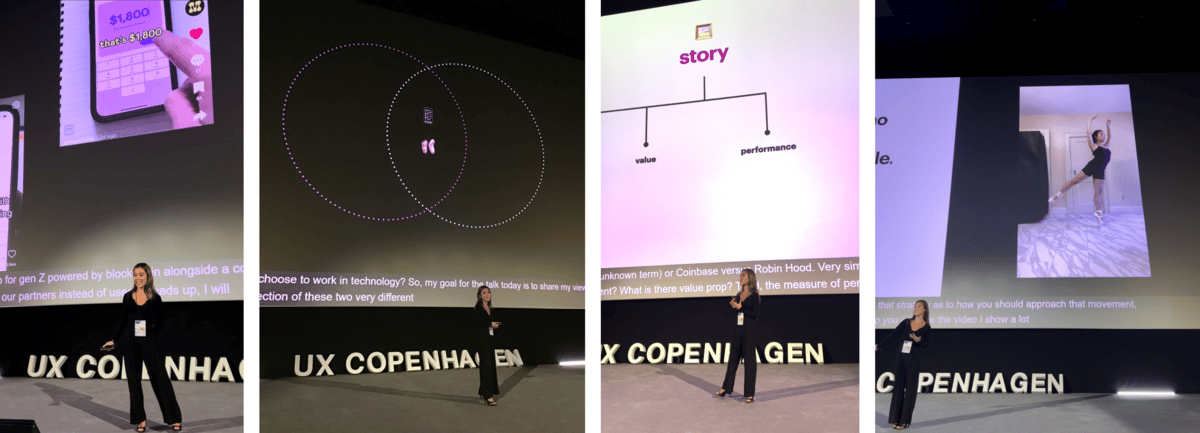
And my goals were to hit these points in my talk:
How are ballet and design similar?
How does my background in ballet help make me a better designer?
What are the takeaways for you? How and what can other creatives learn from an unconventional career change story like mine?

I decoupled my talk into 2 sections.
Starting off with the big picture: High level wise, how are they similar?
As designers and dancers, we are creating.
What are we creating? A story.
Where we have the power to give an experience a form.
And how do we create a good story whether it be through dance or design?
I then broke it down further into 4 categories:
Emotions (In order to deliver a good story, dancers and designers have to stimulate the right emotions. A good design and performance increases confidence in understanding a storyline.)
Value (In this category, I went into the topic of value props and if one is solving on a real “need” in the market.)
The measure of performance (Are the quality of designs reflected properly in production?)
Structure (How do we package the complexity of logic via client side designs?)
And then zooming in, how are they similar during their development stage? Are there any intersections between the two craft’s way of creating?

I went into topics of principles, foundation, strategy, and technique while showcasing examples such as how…
They both require creativity & strategy in order to get to that specific aesthetic or framework we are envisioning. In order to get there, they both work on a process of constant iterations, and experimentations.
They both require a strong beginning, middle, and end.
A completed flow diagram.Beginning (how do you hold your starting position? how do you enter the stage? = how enticing is your welcome flow? How are you hooking your audience in the app?)
Middle (dancers, the importance of how you step into each movement of a variation tells the director/judges if you’re going to be a good dancer or not. Similarly for designers, this is equivalent to the way you design your transitional screens or components, all the way to how you design for edge cases.)
End (the ending needs to be as strong as the beginning. The ending screen of that flow needs to be strong in order to keep the momentum alive. And the ending pose of the dance needs to be held strong to complete your performance.)
A designer that has product thinking skills would be equivalent to a dancer that has a good understanding of anatomy and the limits of their own body. (This skill would determine how you approach strategy and the intentions behind each design decision and/or movement.)

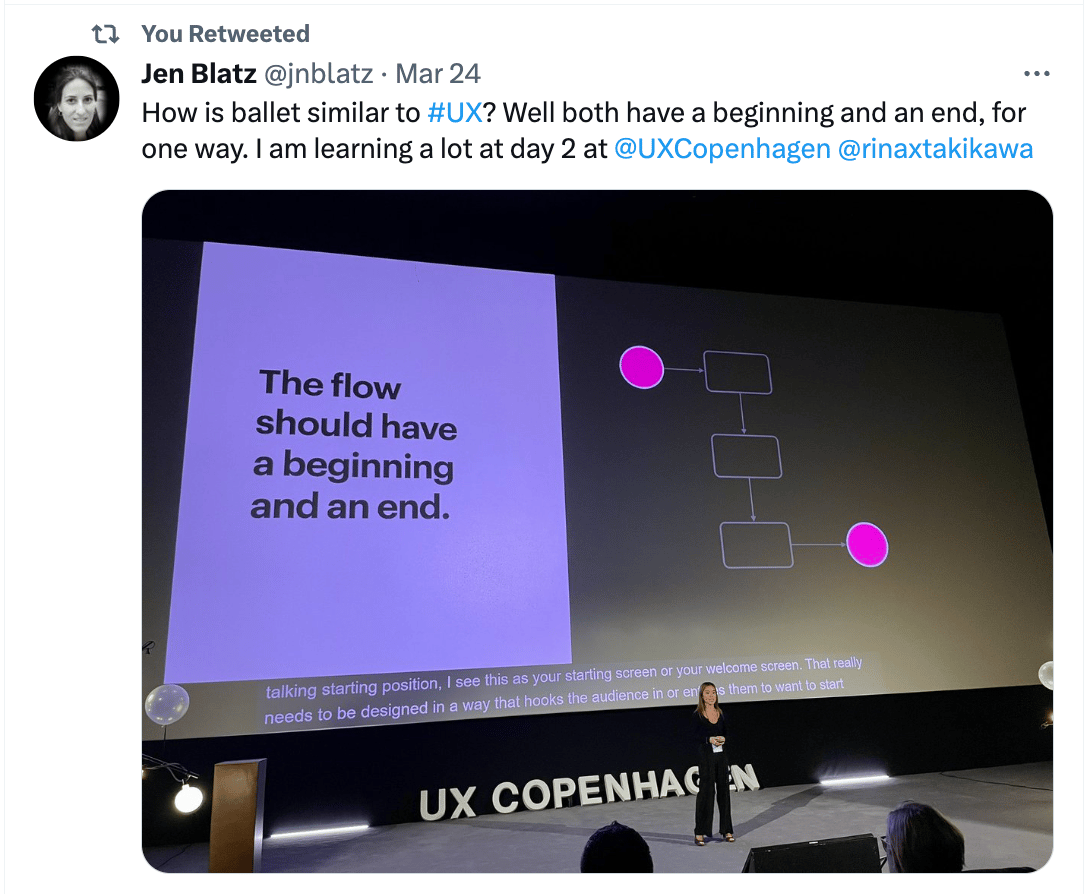
Everything I’m writing here is just a small piece of what I shared in my talk at the conference. But the takeaway remains the same.
To open everybody’s minds that a totally different industry like ballet which has no connection to technology whatsoever can actually be very similar (invisibly) in the ways of working and delivering.
Embrace your diverse backgrounds and different interests in life because there will always be something that can benefit how you look at things, how you work and strategize, while potentially also leaving you with more inspiration and creativity.
See it or not, there will be always be invisible similarities. And it will only benefit your process development.
I finished my talk with one of my favorite quotes (and a banger) by Tobias van Schneider, and wow did it blow up.
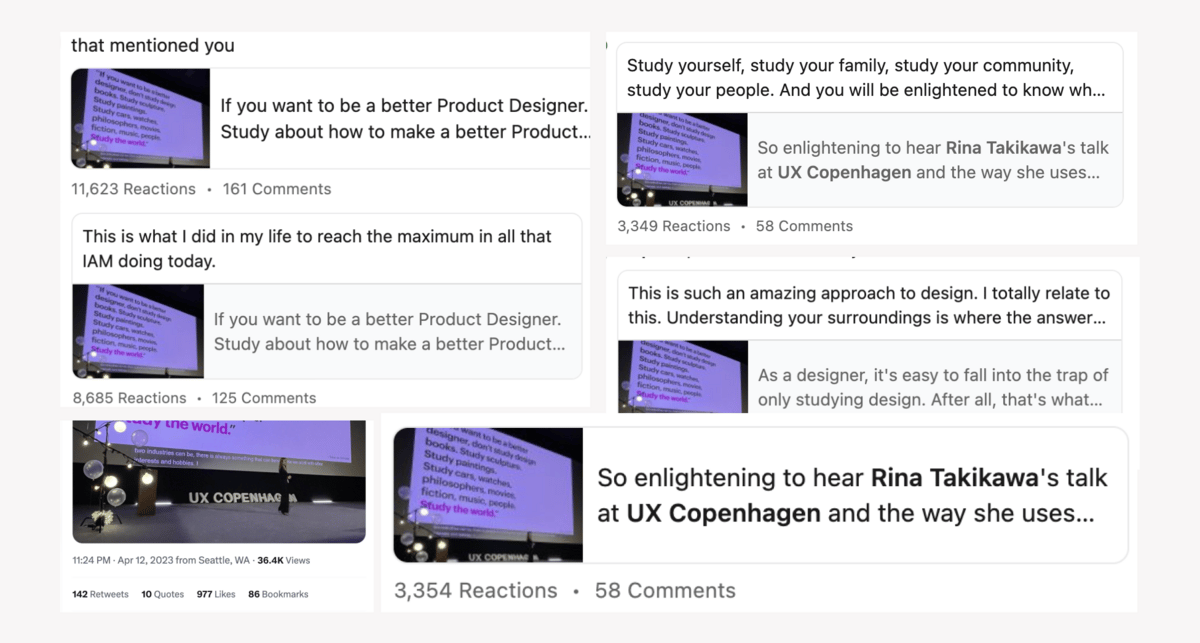

taking a moment to freak out because this!!
“If you want to be a better designer, don’t study design books. Study sculpture. Study paintings. Study cars, watches, philosophers, movies, fiction, music, people. Study the world.”
I hope this quote inspires you as much as it inspires me.
Career changer or not, keep your passions, keep your hobbies, and invest in learning about your external world. Break out of your shell, and do something new because innovation and creativity comes from learning about the outside world.
Experience or technical hard skills can always can always be gained. But fresh perspective cannot be engineered.
Memories, new friends, and final words!
If you’re ever in Copenhagen, try out this cafe 🤌
After my talk, a lovely photographer came up to me and shared this amazing resource with me: andco.dk —turns out that this organization actually has their employees take ballet classes to fuel their creativity! (How interesting and so on topic with my talk!)
Did I mention that I also met some of the best people spontaneously throughout my trip?
Dan. We met on our plane ride to CPH, where he was sitting next to me! We hit it off so well that we were talking for a good hour or two—From topics such as our careers, supply chain, our similar passion in education, philosophy, to the future of AI.
Christopher. We met the day I landed in Copenhagen, at a cafe!
Julia. We met at the conference, where she was helping out on social media. We ended up hanging out after the conference where she took me around the city and introduced me to her roommates and friends (s/o to them! Tekle, Carmen, Rik, Steffi)❤
Follow UX Copenhagen, and be on the look out for the conference next year!
Reply directly to this email to say hi, and let’s keep the convo going!
